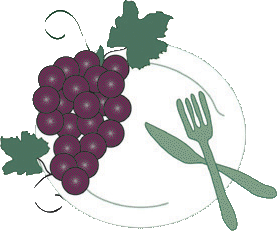
SDOT's Liz Ellis explains why this particular maple must go; cedars and plums compete for sidewalk space along 2nd Avenue
Pounding the pavement like a cop on the beat, waving at shopkeepers, petting a dog, helping an old lady, munching a donut, strolling the sidewalk, protecting the neighborhood...in some Hollywood Shangri-La, maybe, but not in 21st century urban America, where the cops rarely leave the security of their patrol cars. Kids may play hopscotch on the sidewalks of Madrona or Wedgewood, but not in Belltown, where the sidewalks, for better or worse, have become a full-scale laboratory for transportation engineers and urban planners. Art projects, sidewalk cafés, bus shelters, bike racks, newspaper vending machines, garbage cans and trees of various ages and diverse species populate the right-of-way, buckling the four-inch concrete and turning the simple business of walking down the block into a hazardous obstacle course.
First Avenue, all agree, is the worst, but First gets no respect. The current budget, the current project, is to repave Fourth northbound and Second southbound, from downtown to Denny. Now, having written the specs, SDOT's engineers are belatedly soliciting public input for sidewalk improvements, and it fell to SDOT's Liz Ellis and a couple of her colleagues to meet over the weekend with half a dozen residents who turned out to discuss, specifically, the fate of trees along Second.
Fate, as it happens, smiles on the incense cedar (source of pencils and much prized in our cool, dry climate), to the disadvantage of the oak, the plum, the tulip and the maple. Especially the maple, which grows and grows and grows until it's over three feet across and essentially stops pedestrian traffic. Were it a bicycle or a fat, somnambulant drunk, we could request it move along, please, and stop blocking the sidewalk. Liz Ellis is also no fan of maples planted on street corners (where they interfere with drivers' sight-lines); she thinks we need to suck it up and cut them down.
The curbside plums, immersed in the blue clay that underlies Belltown's concrete, create their own problems, what with leaves and trash that accumulate in the tree pits, not to mention the muddy barrier to they create for people getting in and out of parked cars. The oaks expand at the bottom and outgrow their home within a few years, roots creating havoc with walkways; the cedars, on the other hand, grow straight and tall and narrow; they play well with others, even if they are, in the eyes of some, not all that attractive.
The tree-lined boulevards of Paris do fine with plane trees, sycamores we'd call them. Or linden trees, the broad-leafed limes. Or chestnuts. All carefully monitored, carefully pruned, each one embedded with a computer chip connected to a central computer. Maintenance of the city's infrastructure (concrete, cobblestone, green) is a civic responsibility, not an afterthought. SDOT could take a lesson in public policy from the City of Light, where beautification isn't left to engineers but is considered one of the primary obligations of elected officials. Are you listening, Mr. Nickels?
As far as Belltown is concerned, SDOT "is looking at this as a maintenance project and not an urban liveablity project, including trees and landscaping," said one neighbor. Environmental watchdog and green architect Carolyn Geiss was not optimistic either about SDOT's involvement in neighborhood issues like streetscapes, urban landscaping, parking or community centers. "They experiment on Belltown, but when it comes time to actually do it," she says, referring to projects in South Lake Union, Pike-Pine, Magnolia Village, Broadway, Greenwood, "they do it right somewhere else."
Posted by Ronald Holden at January 19, 2009 8:00 AM | TrackBack

The International Kitchen
Cooking school vacations in Italy, France & Spain.


 Who links to me?
Who links to me?